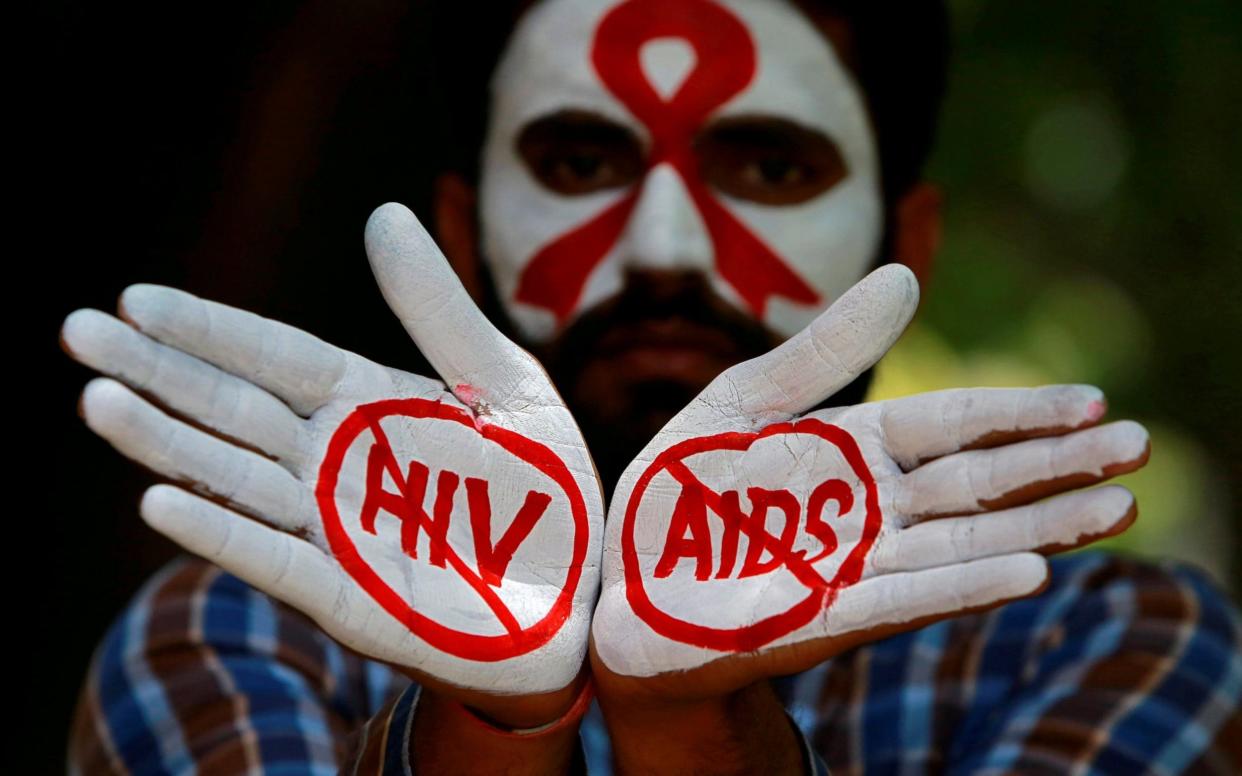An 'alarm bell': Experts warn HIV has hit a 10 year high in Europe ahead of 30th World Aids Day

The rate of new HIV infections reached a decade-long high in Europe last year, raising an "alarm bell" ahead of the 30th anniversary of World Aids Day on Saturday.
Despite the huge progress made in controlling the global endemic since the 1980s, Europe saw nearly 160,000 new HIV cases in 2017.
This is equivalent to 20 people per 100,000, a rise from the 18.2 new diagnoses per 100,000 people in 2016, according to a joint report from the World Health Organization (WHO) and European Centre for Disease Prevention and Control (ECDC).
Every other person diagnosed had already developed Aids, an advanced stage of the infection.
The figures were published on Tuesday to commemorate World Aids Day, the theme of which is 'Know your Status'. Last week, a UNAID report found that 9.4 million people living with HIV worldwide do not currently know they are living with the virus.
In Europe, over 80 per cent of infections – some 130,000 – were in Eastern Europe last year. Conservative social attitudes there have limited treatment availability and prevented those likely to be affected – men who have sex with men, injecting drug users and sex workers – from receiving help.
“The WHO European Region is the only region where HIV infections are sharply rising,” said Dr Masoud Dara, coordinator for communicable diseases and HIV team lead at WHO Europe. “This report should be an alarm bell.”
But unlike Eastern Europe, European Union and European Economic Area countries have seen new HIV infections drop, from 6.9 per 100,000 in 2016 to 5.8 per 100,000 last year.
In the UK, roughly 101,000 people are living with the disease, and 6.7 new cases per 100,000 population were reported in 2017.
HIV is an incurable but manageable disease which damages the immune system and limits a person’s ability to fight everyday infections. If not caught early the illness, which is transmitted from person to person, can develop into Aids, which has claimed roughly 35 million lives since 1981.
Over two thirds of people living with HIV are still in sub-Saharan Africa. But while the continent still faces huge challenges, new infections have been steadily falling over the past two decades - unlike Eastern Europe, where infections have almost doubled since 2000.
“This goes back to ideological issues in this part of Europe which hinders the ability to introduce treatment,” said Dr Dara. “For example, implementing harm reduction methods are often seen as promoting drug use.”
Russia and Ukraine bear the brunt of HIV infections, contributing 75 per cent of all new cases in Europe and 92 per cent of those in the East. The report warns that there is an “urgent need” to tackle the growing threat of the disease in these countries.
"What's happening in Russia, of course, is a government that criminalises key populations and don't provide any services for them," said Mike Podmore, director of STOPAIDS, organiser of the ENDAIDS2030 Festival. "So infection rates are going through the roof."
"Ultimately to end Aids by 2030 we have to make progress in every region of the world, in every continent," Mr Podmore added. "It's a real worry - we can't end Aids if we're not even sustaining the gains we've made."
But there is reason to be optimistic, as Europe’s infection rate has slowed since 2016.
Between 2007 and 2016, new infections rose by 52 per cent, but between 2008 and 2017 this increase was lower at 37 per cent. This reduction is mainly due to fewer new diagnoses among women, the report says.
“Overall there has been a lot of progress, but to make sure it is sustained and we are able to eliminate the disease by 2030, we need increased commitments from Eastern Europe to tackle HIV and AIDS,” said Dr Dara.
“Some parts of the region, like Belarus and Georgia, have already made progress, so we know that it can be done. But we need progress to be sustained and scaled up to ensure people have access to the quality treatment they deserve,” he added.
Protect yourself and your family by learning more about Global Health Security

